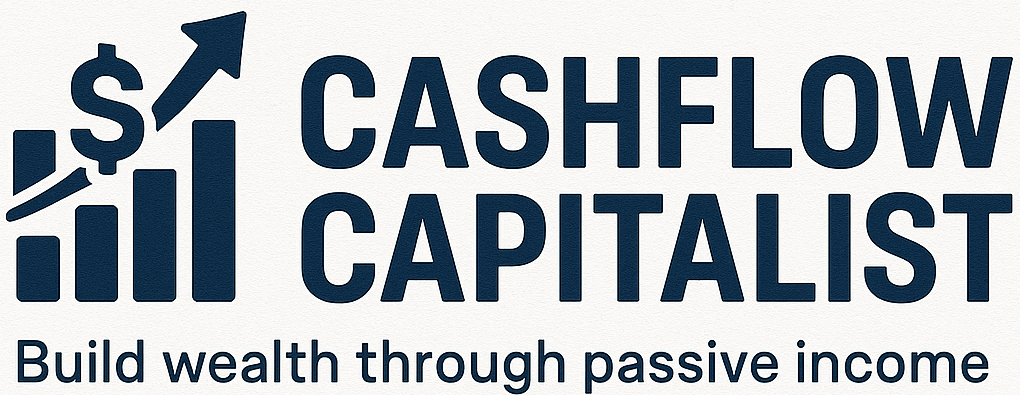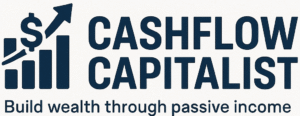How to Build a Recession-Proof Wealth Portfolio in 2025: Smart Investing for Tough Times
As you face the unknowns of 2025, creating a recession-proof wealth portfolio is vital. The world’s economy is set to shift, and it’s key to protect your money.
Spreading your investments across different types is essential. Look into dividend stocks, Canadian ETFs, GICs, bonds, gold, and crypto. This mix helps reduce risks and boosts growth over time.

With a smart investment plan, you can keep your finances safe and find new chances. A diverse portfolio acts as a defense against tough economic times.
Key Takeaways
- Diversify your investments to mitigate risks
- Consider dividend stocks for stable income
- Explore Canadian ETFs for diversified exposure
- GICs and bonds offer stable, low-risk investments
- Gold and crypto can hedge against market volatility
The Economic Landscape of 2025: Why Recession-Proofing Matters Now
Investing in 2025 requires understanding the current economic scene. The global economy is showing mixed signs. This includes cooling real estate, ongoing inflation, and the effects of tariffs.
Global Economic Uncertainties on the Horizon
The U.S. economy is going through changes, with signs of possible economic hurdles. Knowing these risks is key to smart investing. Key factors include:
- Inflation: High inflation can reduce your money’s value. It’s vital to invest in assets that do well when prices rise.
- Tariffs and Trade Policies: Tariffs and changing trade rules can mess with global trade. This can disrupt supply chains and hurt company profits.
- Real Estate Market: Slowing real estate can affect the whole economy. It can lower consumer spending and confidence.

Lessons from Previous Recessions
Even with today’s economic challenges, past recessions offer valuable lessons. They show the need for diversification, managing cash flow, and reducing risks. These lessons can help you prepare your portfolio for tough times.
For example, having a recession-proof ETF or investing in high-interest savings ETFs can protect against market ups and downs. Also, focusing on Canadian finance and retirement planning can guide you through uncertain times.
Core Principles of Building a Recession-Proof Wealth Portfolio
To build a strong investment portfolio, you need to know the basics of recession-resistant assets. A recession-proof portfolio aims to reduce losses and keep returns steady during tough times. It focuses on stability, diversification, and choosing value over growth.
Key Characteristics of Recession-Resistant Assets
Recession-resistant assets have a few key traits. They are usually less volatile, have stable cash flows, and perform well in downturns. In Canada, dividend stocks, Canadian ETFs, GICs, and bonds are good choices. They offer steady income and are less shaky than growth investments.

Balancing Defense and Growth in Uncertain Times
It’s important to balance defensive and growth assets in your portfolio. Defensive assets like gold and precious metals protect against inflation and market ups and downs. Growth assets, such as Canadian ETFs and dividend stocks, can grow over time. Diversifying across different types of assets helps manage risks and seize opportunities.
A diversified portfolio with both defensive and growth assets can help you face economic downturns. It also sets you up for long-term success.
Essential Asset Classes for Economic Downturns
Preparing your investment portfolio for 2025’s economic downturn is key. Focus on asset classes that do well in recessions. A diverse portfolio is your best shield against market ups and downs. Some assets are more stable than others during tough times.
Dividend Stocks: Stable Income During Market Volatility
Dividend stocks offer stable income in shaky markets. Companies that consistently pay dividends usually weather economic storms better. For example, Royal Bank of Canada (RY) and Toronto-Dominion Bank (TD) have a solid dividend history. Investing in these stocks can provide steady income, helping to balance out losses.

Canadian ETFs for Broad Market Exposure
Canadian ETFs make it easy to spread your investments across different areas. They let you diversify your portfolio, covering various sectors and assets. ETFs like ZRE (TSX: ZRE), ZWC (TSX: ZWC), and XEQT (TSX: XEQT) are favorites for Canadians. They offer broad exposure, lowering the risk of individual stock failures.
Fixed Income: GICs and Bonds as Portfolio Stabilizers
Fixed income investments, like GICs and bonds, are vital for a stable portfolio. GICs are low-risk with fixed returns, while government and top corporate bonds are safe for your money. Adding these to your portfolio can make it less volatile and more predictable.
By including these key asset classes in your strategy, you can create a resilient portfolio. It’s ready to face economic downturns head-on.
Hedging Against Inflation and Currency Fluctuations
To protect your investments, it’s key to know how to shield against inflation and currency changes. With economic worries around, adding assets that do well in tough times is wise.

Gold and Precious Metals in the Canadian Context
Gold and precious metals are seen as safe during economic downturns. In Canada, you can invest in them through physical gold, ETFs like the XGD ETF, or mining stocks.
Benefits of Gold and Precious Metals:
- Diversification: Reduces portfolio risk
- Inflation Hedge: Tends to perform well during inflationary periods
- Safe Haven: Attracts investors during economic uncertainty
| Investment | Liquidity | Risk Level |
|---|---|---|
| Physical Gold | Medium | Low |
| Gold ETFs | High | Low to Medium |
| Mining Stocks | High | Medium to High |
Strategic Cryptocurrency Allocation: Beyond the Hype
Cryptocurrency can also act as a hedge against inflation and currency changes, but it needs careful planning. Adding a small part of your portfolio to cryptocurrencies like Bitcoin can add diversity.
Key Considerations:
- Volatility: Cryptocurrency prices can be highly volatile
- Regulatory Risks: Changes in regulations can impact cryptocurrency values
- Diversification: Should be part of a broader diversification strategy
By adding gold, precious metals, and a smart cryptocurrency allocation, you can make your portfolio more resilient against inflation and currency changes.
Defensive Sectors That Thrive During Economic Downturns
As we look ahead to 2025, knowing about defensive sectors is vital. These sectors stay strong or even grow when the economy slows down. They offer essential goods and services that people always need, no matter the economy.

Utilities and Consumer Staples: Necessities in Any Economy
Utilities and consumer staples are top defensive sectors. Utilities like electricity and water are must-haves for daily life. Consumer staples, like food and household items, are also key, even when money is tight.
Investing in these areas can be done through ETFs. Look into utilities ETFs like Exchange Income Corporation or consumer staples ETFs with companies like Loblaws or Nestle. These tend to be more stable, less affected by economic ups and downs.
Healthcare and Discount Retailers: Recession-Resistant Businesses
Healthcare and discount retailers are also defensive sectors. Healthcare includes drugs, hospitals, and providers. Discount retailers offer affordable goods, attracting shoppers even in tough times.
Investing in healthcare ETFs or discount retailer stocks is smart. Consider healthcare ETFs with big pharmaceuticals or retailers like Shoppers Drug Mart or Dollarama. These businesses keep their customers, even when money is tight.
By focusing on these sectors, you can make your investment portfolio more resilient. It will be better prepared for economic changes.
Building Your Recession-Proof Portfolio: A Step-by-Step Approach
Preparing for 2025’s economic uncertainty means building a recession-proof portfolio. This is key to protecting your financial future. It starts with figuring out your asset allocation based on how much risk you can handle.
Asset Allocation Strategies for Different Risk Tolerances
Your asset allocation is the heart of your investment portfolio. It’s about spreading your investments across different types, like stocks, bonds, and cash. This balance helps manage risk and aim for returns.
For those who play it safe, bonds and fixed-income securities might be the way to go. But if you’re more daring, stocks could be your game. Think about your goals, how long you can invest, and how you feel about market ups and downs. Online tools or a financial advisor can help tailor a plan just for you.

Recommended Canadian ETFs and Funds for 2025
In Canada, certain ETFs and funds are great for a recession-proof portfolio. Look at broad-market ETFs like the BlackRock iShares S&P/TSX 60 Index ETF (ZCN). It mirrors the biggest Canadian stocks.
For steady income, consider the Vanguard FTSE Canada High Dividend Yield Index ETF (VDY). It focuses on dividends. The BMO Equal Weight Banks Index ETF (ZEB) gives you a piece of Canadian banks. For safety, fixed-income ETFs or GICs offer stable returns when times are tough.
Portfolio Rebalancing During Market Turbulence
After setting up your portfolio, keeping it balanced is key. Market swings can throw off your mix, upping your risk. To rebalance, check your portfolio often and tweak it to match your target.
Regular rebalancing helps you buy low and sell high. This can soften the blow of market ups and downs. Try to rebalance every quarter or year to keep your strategy on track with your goals.
Creating Multiple Streams of Passive Income
As economic uncertainties grow, having different passive income streams can change your financial game. By spreading your income, you lessen your dependence on one source. This makes you more financially stable when the economy dips.

Dividend Reinvestment Plans (DRIPs) and Monthly Income ETFs
Dividend Reinvestment Plans (DRIPs) and Monthly Income ETFs are great for passive income. DRIPs let you automatically reinvest dividends, growing your investment. Monthly Income ETFs give regular payouts, making income predictable.
For example, the Vanguard Dividend Appreciation Index Fund is a solid pick for monthly income.
Real Estate Investment Trusts (REITs) for Consistent Cash Flow
Real Estate Investment Trusts (REITs) are good for steady cash flow. They let you invest in real estate without managing properties. This means rental income without the work.
Canadian REITs like RIO.CN or SLP.UN are favorites for regular income.
High-Interest Savings ETFs and GICs for Safe Income
High-Interest Savings ETFs and Guaranteed Investment Certificates (GICs) are safe and stable. High-Interest Savings ETFs, like those from EQ Bank, offer liquidity and high interest. GICs give a fixed return for a set time, making them low-risk.
Adding these strategies to your portfolio can build a strong passive income base. This helps you face economic ups and downs with more confidence.
Risk Management Strategies for Preserving Wealth
In uncertain economic times, it’s key to protect your wealth. A good plan includes having an emergency fund, using insurance, and investing wisely. These steps help keep your money safe.

Emergency Fund Optimization with EQ Bank and Wealthsimple
Having a savings fund ready for emergencies is vital. Look into high-interest savings accounts from EQ Bank and Wealthsimple. They offer great rates and low fees, helping your savings grow while staying easy to access.
- Open a high-interest savings account with EQ Bank or Wealthsimple to earn higher interest on your emergency fund.
- Set up automatic transfers to maintain a consistent savings rate.
- Consider laddering your savings across multiple accounts to maximize interest earnings while maintaining liquidity.
Insurance and Tax-Efficient Investing Through TFSAs
Insurance and smart investing can also protect your wealth. Using Tax-Free Savings Accounts (TFSAs) for your investments can save you a lot on taxes. This lets your money grow faster.
Key considerations for TFSA investing include:
- Maximizing your TFSA contribution room each year to grow your investments tax-free.
- Selecting a diverse range of investments within your TFSA, such as stocks, bonds, and ETFs.
- Reviewing and adjusting your TFSA holdings regularly to ensure alignment with your overall financial goals and risk tolerance.
By using these strategies, you can build a strong defense against economic downturns. This helps keep your wealth safe for the future.
Conclusion: Maintaining the Right Mindset for Long-Term Wealth Building
Building a recession-proof wealth portfolio in 2025 requires discipline. Staying focused on long-term goals and avoiding emotional decisions is key. These habits are the foundation of your wealth building strategy in Canada.
A disciplined mindset helps you make smart choices, even when markets are unpredictable. By focusing on financial freedom and using recession-proof strategies, you protect your future. This means wisely choosing where to invest, diversifying, and being ready for any economic change.
Sticking to your investment plan is vital, even when things get uncertain. This approach helps you seize opportunities and overcome challenges. It leads to financial freedom through wise, long-term investment choices.
FAQ
What is a recession-proof wealth portfolio?
A recession-proof wealth portfolio is a mix of investments designed to grow even when the economy is down. It aims to reduce risks and keep growing over time.
Why is diversification important in a recession-proof portfolio?
Diversification is key because it spreads your investments across different types. This includes dividend stocks, Canadian ETFs, GICs, bonds, gold, and crypto. It helps lower your overall risk.
What are the key principles of building a recession-proof wealth portfolio?
The main principles are understanding assets that resist recessions, balancing risk and growth, and choosing a mix of quality investments. This keeps your portfolio strong.
Which asset classes are more resilient during economic downturns?
Assets like dividend stocks, Canadian ETFs, and fixed income investments like GICs and bonds do well in tough times. So do defensive sectors like utilities and consumer staples.
How can I hedge against inflation and currency fluctuations?
To protect against inflation and currency changes, add gold, precious metals, and cryptocurrency to your portfolio. Also, stick to a solid investment plan.
What are defensive sectors that thrive during economic downturns?
Defensive sectors include utilities, healthcare, consumer staples, and discount retailers. They offer essential goods and services, making them strong during downturns.
How do I build a recession-proof portfolio?
To build a recession-proof portfolio, allocate assets based on your risk level. Choose the right Canadian ETFs and funds. Also, rebalance your portfolio regularly.
What are the best strategies for creating multiple streams of passive income?
For passive income, use dividend reinvestment plans, monthly income ETFs, REITs, and high-interest savings ETFs and GICs. These strategies can help you earn income without much effort.
How can I manage risk in my investment portfolio?
Manage risk by building a solid emergency fund, using insurance, and investing wisely in TFSAs. These steps help protect your investments.
Why is maintaining a disciplined investment mindset important?
A disciplined mindset is vital for building wealth over time. It keeps you focused on your goals, avoids emotional decisions, and encourages patience.
What is the role of Canadian ETFs in a recession-proof portfolio?
Canadian ETFs offer broad market access. They help diversify your portfolio, reducing your reliance on single stocks or sectors.
How can I invest in defensive sectors?
Invest in defensive sectors through ETFs and other vehicles that track recession-resistant businesses. This includes utilities, healthcare, and consumer staples.
What is the importance of portfolio rebalancing during market turbulence?
Rebalancing your portfolio is key to keep your investments aligned with your risk tolerance and goals. It ensures your asset mix remains optimal.
How can I use TFSAs for tax-efficient investing?
Use TFSAs for tax-efficient investing by holding investments within the account. This can help reduce taxes and increase your returns.




